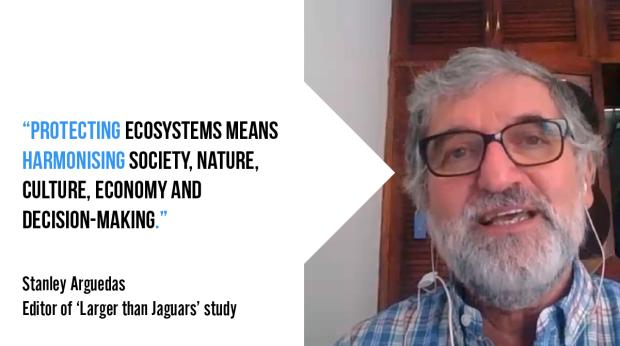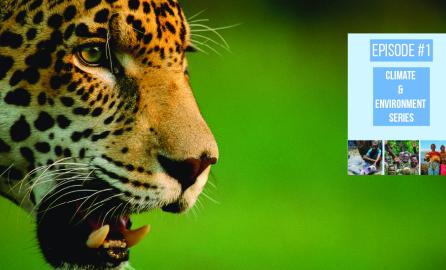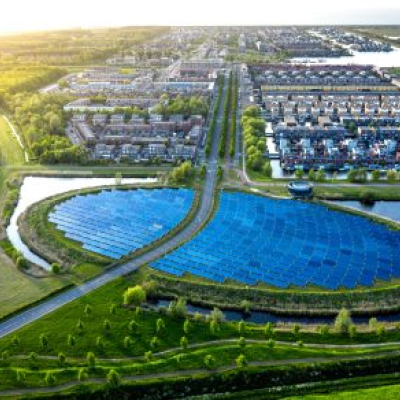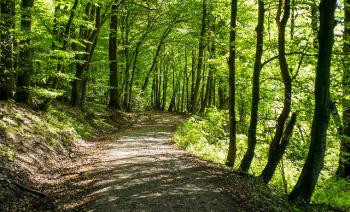Structural change is needed to overcome the unbalanced relationship of humankind with nature. The COVID-19 crisis has emphasized an urgent need to examine our footprint on ecosystems and avoid future pandemics of zoonotic origin. Solutions exist. The EU is funding numerous projects with integrated approaches which benefit both people and nature.
With the European Green Deal, the EU is proposing a transformative economic and societal agenda that combines policies to reach climate neutrality, halt biodiversity loss and reduce pollution, while leaving no-one behind. With respect to nature, this means combining biodiversity protection with the creation of green jobs and better livelihood for local populations[1].
These EU policies are detailed in continent-wide strategic approaches for wildlife conservation around the world called the “Larger than…” study series.
The first issue appeared in 2015 with the title ‘Larger than Elephants’ and focused on African biodiversity. The second study, published in 2018, ‘Larger than Tigers’ addressed ecosystems in Asia. The third study is called ‘Larger than Jaguars’ and a summary has already been published. It focuses on Latin America and the Caribbean.
Lessons learnt from the ‘Larger than Jaguars’ study
Stanley Arguedas, Technical Coordinator of the Latin American School of Protected Areas in Costa Rica and editor of the study, shared with Capacity4dev the main takeaways of this research:
- A holistic approach: Combining economic, social and ecological dimensions allows us to better understand and more effectively protect endangered areas;
- Governance: There is still a need to support capacity building to increase the management skills of those working in protected areas. At the same time, more emphasis needs to be placed on overall governance and identifying which aspects of wildlife conservation need to be prioritised in each site to save these fragile environments;
- Sustainable development and the private sector: The private sector needs to be included in this sustainable approach to protect nature by identifying green investment opportunities;
- Larger than species: Conservation should be understood as a process that can be partly aimed at specific species, but also as part of an approach where animals and humans are thought of as a single ecosystem;
- Local populations and CSOs participation: The participation of local populations, citizens, and civil society organisations (CSOs) to activities linked to the protection of endangered species and areas is a powerful way to increase awareness, and to encourage nature preservation;
- Legislative framework: Environmental legislation needs to be comprehensive and applied to all, with particular focus on means of implementation and enforcement, as well as anti-corruption. It is an integral part of sustainability in natural resource management.
The Pantanal region: a good example of biodiversity conservation
One example of the active role of CSOs to preserve nature is in the Pantanal region, the world’s largest tropical wetland. “This ecosystem shared by Brazil, Paraguay and Bolivia is the area with the highest density of Jaguars on the planet and is key to the survival of four million people in the upper Paraguay basin,” explains Cassio Bernardino, coordinator of the EU-funded project PASOS in Pantanal, Brazil[2].
Local population and CSOs participation

The EU supports through this project different CSOs and local governments to preserve the natural resources in the region, home to more than 270 communities composed of indigenous groups, cattle ranchers, and tourism operators who rely on the wetlands for a living. With the goal of protecting wildlife, the project therefore combines the needs of people and the needs of nature in the most sustainable way.
This fragile equilibrium often requires strong mediation skills. To this end, trained local CSOs, which represent the different points of view in public debates, are collaborating with local authorities. Their role is to understand all positions and interests and to find common ground.
Challenges and solutions
Cassio Bernardino explains that “there are three main challenges for the Pantanal wetlands”. The creation of hydropower with major critical consequences on water resources is one of them. The frequent fires in the region, leaving no time for the ecosystem to regenerate by itself – as we have seen last year – is another critical threat. The illegal wildlife trafficking is the third major issue. Body parts of jaguars such as paws and teeth are sold as traditional medicines, therefore reducing the population of this emblematic animal and putting the ecosystem in danger.

This EU-funded project offers concrete sustainable solutions to act against these environmental threats. Renewable electric power alternatives to hydropower in the Alto Paraguay Basin is one such solution. It addresses the needs of the local economy, the growing population’s energy demand, and avoids the negative environmental impacts of the hydropower plants in the Pantanal.
The Pantanal geographical landscape – covering several countries – requires a multidimensional approach of conservation based on multisectoral dialogues, consortiums and working groups.
A real turning point?
The current pandemic is an opportunity for deep transformation. According to Stanley Arguedas, “COVID-19 has changed human behaviour. We are now more conscious of what is and what is not essential in life. People are also re-considering their relationship with nature, both inland and at sea. This is something that, for years, scientists have failed to achieve”.
“This study,” he continues, “is an important opportunity to understand the threats and the solutions we have at hand, and to create a better world in which we interact differently with nature.”
Click on the play button below to watch our video about protecting biodiversity in Latin America and the Caribbean.
Read the other episodes of the climate and environment series:
- Episode #2:Improving wildlife conservation and food security with local communities
- Episode #3: Local heroes protecting the world's biodiversity hotspots
- Episode #4: Team Europe-Kenya Partnership: community-led wildlife conservation
Credit: Video © Capacity4dev | Photo © 2003 Staffan Widstrand. All Rights Reserved
[1] See the EU Biodiversity Strategy for 2030 and the European Green Deal.
[2] Full name of the EU-funded project PASOS for "Sustainable Landscapes of the Pantanal, Cerrado and Chiquitano Dry Forest" (2018-2021) “Un modelo regional de desarrollo sostenible, participativo, inclusivo y climáticamente inteligente en áreas interconectadas del Cerrado, Pantanal y Bosque Seco Chiquitano”





Log in with your EU Login account to post or comment on the platform.